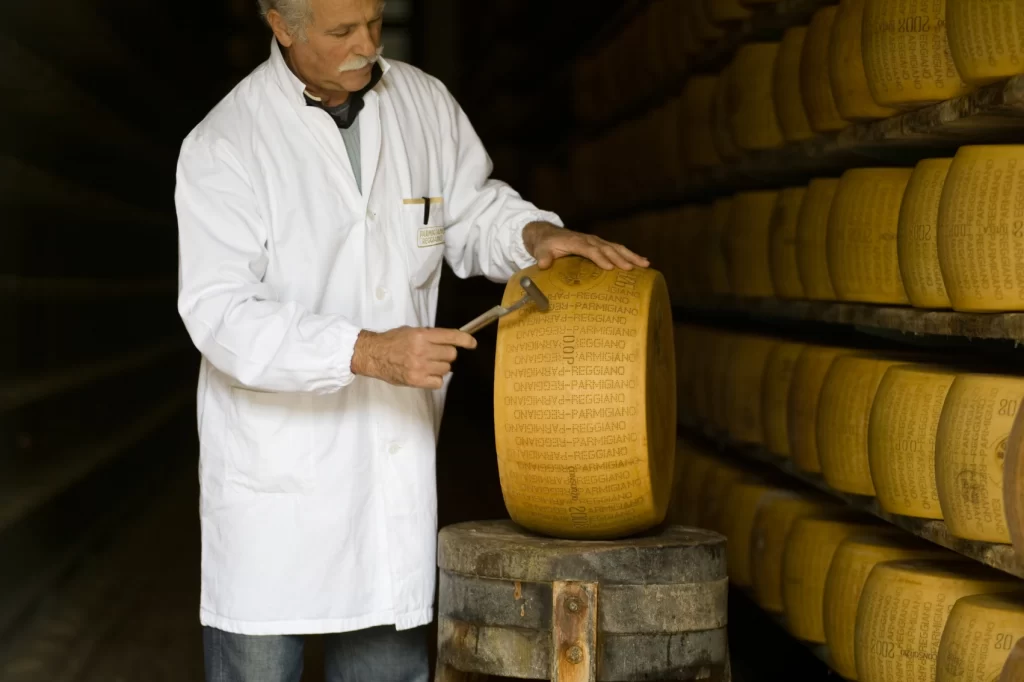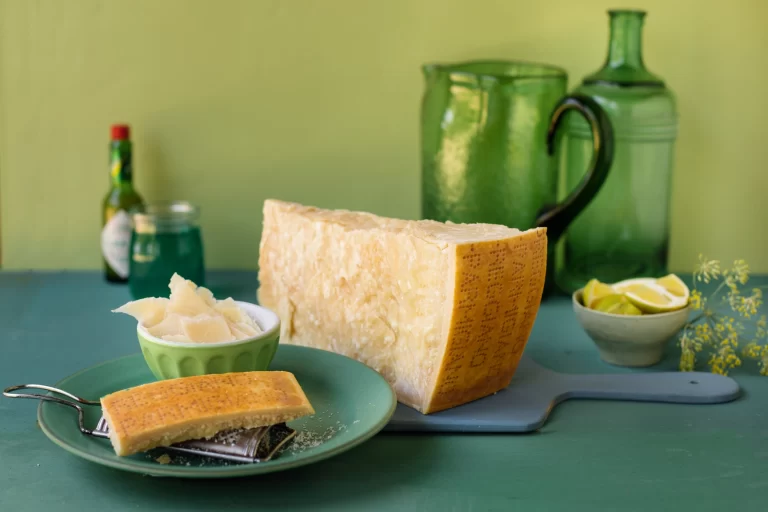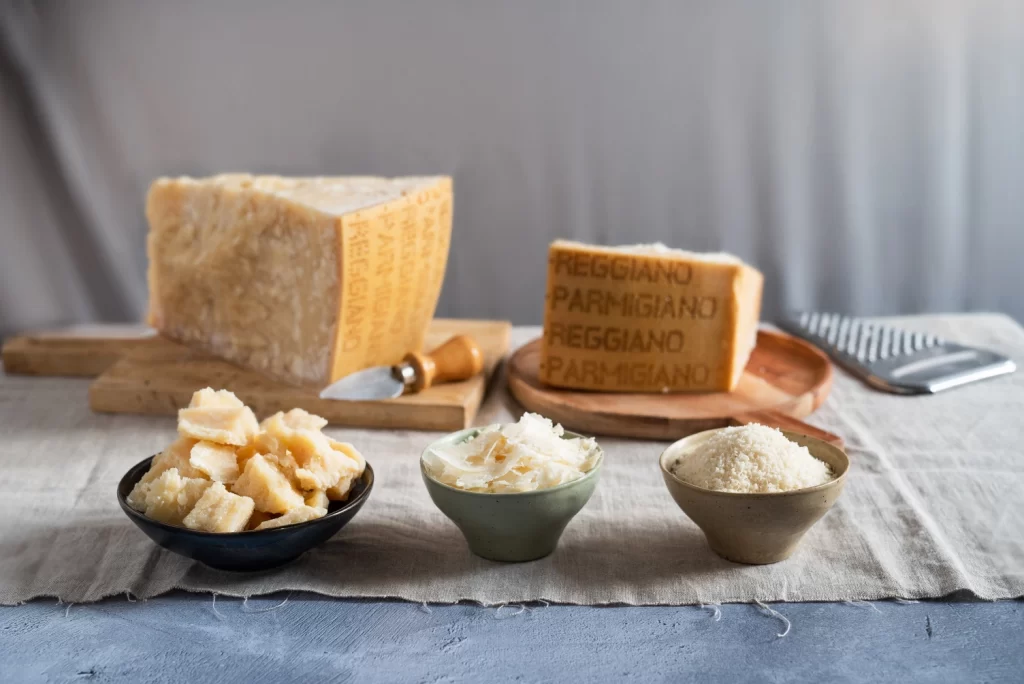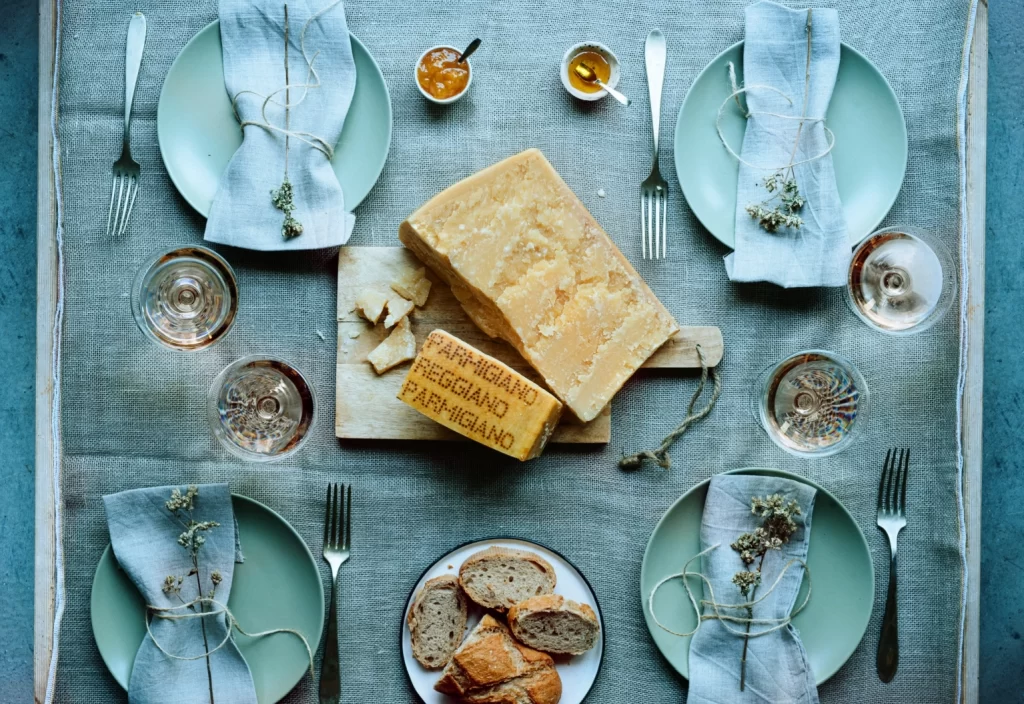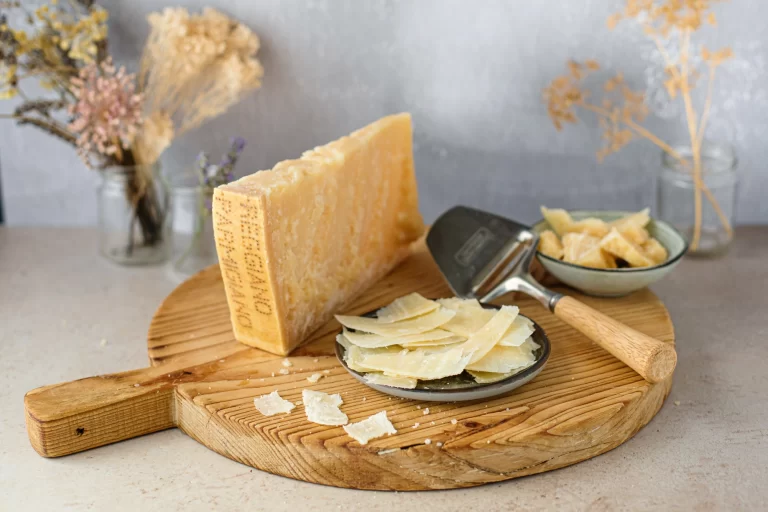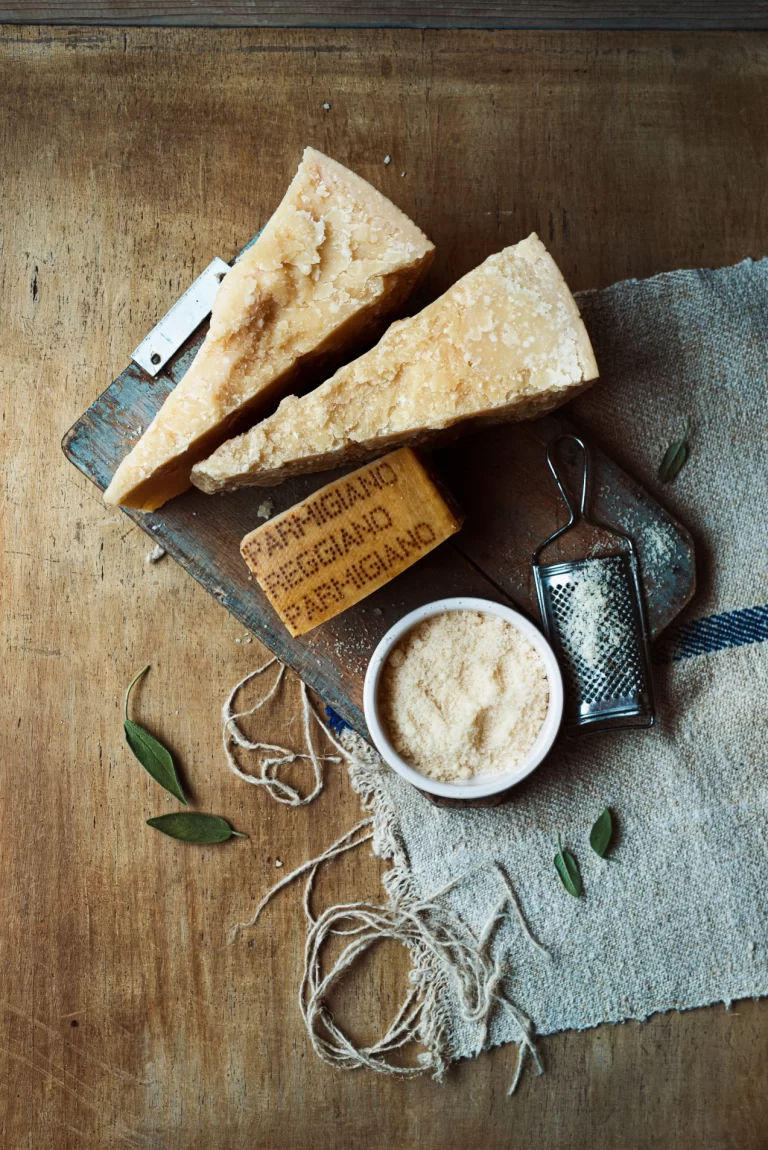Borne from the labour of monks with one main need, a long-last cheese, Parmigiano Reggiano has evolved since then to become an authentic representation of the Made in Italy brand of international exports.
With over 4mil wheels weighing over 160000 tons produced in 2022 alone, Parmigiano Reggiano annually contributes an estimated 1.8-2.9 billion Euros to the economy between production and consumption and employs over 50 000 people through the full process.
With its versatility, Parmigiano Reggiano cheese is exceptional for cooking with pasta, meat preparations, and pies. It can be grated, shredded, or shaved as desired or simply eaten without accompaniments to fully appreciate the taste. One of the oldest and richest cheeses in the world, the craftsmanship and production technique for the Parmigiano Reggiano has remained relatively unchanged for over nine-hundred years. With the decision to remain loyal to completely natural production and barring the use of additives often found in other cheeses, Parmigiano Reggiano has retained the EU’s Protected Designation of Origin certification, an authentication that recognizes the social impact of a product and protects consumers and producers alike from fraudulent duplicates.
Dating back to the Middle Ages, the techniques behind the perfect Parmigiano Reggiano have ensured a durable delicacy suited for travelling. With old and noble methods that include letting the cheese mass dry and increasing the wheel size, Parmigiano Reggiano increased its shelf life and ability to travel far from production long before the introduction of refrigeration. This feature has contributed to Parmigiano Reggiano’s success in the Made in Italy agribusiness as centuries later the cheese is still capable of being exported to markets throughout the world. Proof of Parmigiano Reggiano’s heritage is found in historical records, the first dating to 1254 with a notarial deed found in the State Archives of Genoa mentioning a caseus parmensis, i.e. the cheese from Parma. Perhaps the most well-known literary evidence dates back to 1344: Giovanni Boccaccio, in the Decameron, during his description of the district of Bengodi, mentions a mountain of “grated Parmesan” on which “Macaroni and ravioli” were rolled, a clear account of the product’s use in the kitchen.
Produced with only three ingredients, milk, salt, and rennet, Parmigiano Reggiano’s microbial flora results in its flavour, which is influenced only by the environmental factors of the area of origin and the feed of its dairy cattle.
As with all cheeses, the maturity of the cheese is crucial to the flavour, colour, and texture. With Parmigiano Reggiano, the aging factor is carefully calibrated to give all consumers exactly what they may need for a wide variety of tastes and occasions.
The younger, 12- to 15-month-old cheese appears as a faint straw colour, is softer, and has hints of fresh milk and yoghurt, lending it a delicious sweet and sour flavour. The more mature cheeses that range between 24- to 36-months have an amber colour that deepens over maturity and time, are harder, and smell of melted butter with a sweet and salty flavour balance.
How to choose the perfect Parmigiano Reggiano
A perfectly matured Parmigiano Reggiano will compliment any soup, salad, or meat course and makes for the perfect companion to an aperitif, fresh and dry fruit, and nuts. To know which cheese will best suit your needs, follow this quick and easy guide below:
As an Aperitif
Add slivers of 12- to 18-month-old Parmigiano Reggiano to raw vegetables, such as celery and cherry tomatoes. Parmigiano Reggiano can also be accompanied by mild chutney with kiwi, apricot, and melon. Serve with a dry white wine.
In Soup and Pasta Courses
A 24-month-old Parmigiano Reggiano is a perfect match for most of the traditional Italian pasta dishes, both grated and in slivers. For added flavour, add the cheese rind to your vegetable soups.
With Meat and Fish
A 26- to 30-month-old Parmigiano Reggiano can enhance flavour in the preparation of main courses. Add slivers on meat or fish carpaccio or on roast beef with a drizzle of extra-virgin olive oil. Serve with more or less structured red wines.
With Vegetables
All maturities of Parmigiano Reggiano mix well with fresh vegetable salads dressed with a bit of extra-virgin olive oil. It’s indispensable for baked vegetable pies and for traditional recipes, such as Aubergines alla Parmigiana.
With Fruit
A 12- to 18-month-old Parmigiano Reggiano can be enjoyed with fresh fruit such as apples and pears. A 24- to 28-month-old Parmigiano Reggiano is delicious with any type of nuts and dried fruit, especially dried plums.
For more information about Parmigiano Reggiano:
Via Kennedy
1842124, Reggio Emilia
Italy
Website: https://www.parmigianoreggiano.com/
Tel: +39 0522 307741
Email: marketing@parmigianoreggiano.it

